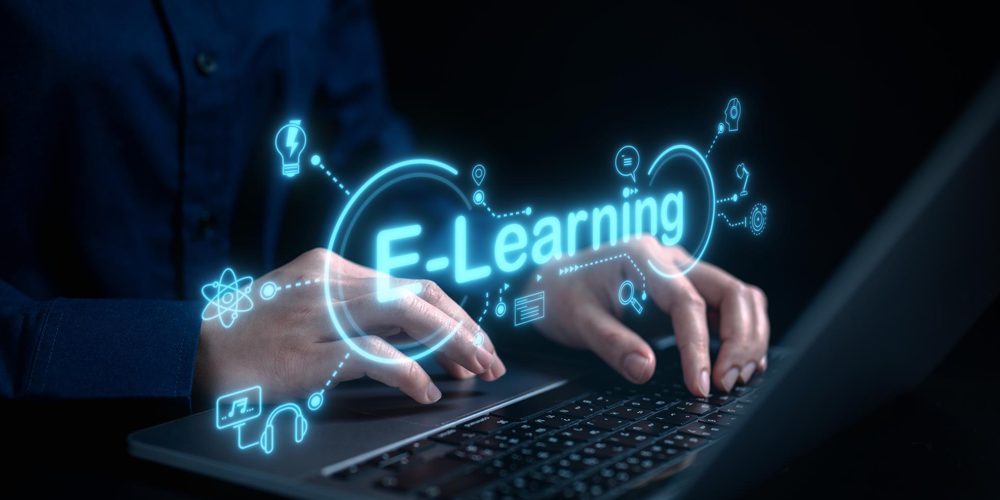Modern learning landscape is powered by different technological advancements focusing on enhanced efficacy and learner satisfaction. When it comes to the flexibility and accessibility in learning, distance education is best offered with the help of advanced online learning platforms and tools. The leading learning and training departments look forward to partnering with the dedicated distance learning services.
With the rise of digital solutions, the flexibility and accessibility in learning is enhanced in the online learning solutions. This write-up delves into the role of distance learning for enhanced efficacy while focusing on flexible and accessible learning.
Distance learning services for modern learners
The need for online learning or distance learning has increased after the Covid-19 pandemic and learner requirements. Many learning organizations are now shifting from the physical campuses to online learning for leading adaptation of the distance learning services.
The top digital learning tools have helped businesses in offering educational opportunities to all. Several learning and training organizations are investing heavily in the development of distance learning solutions.
Elements of flexible and accessible distance learning services
After having a quick overview of distance learning services, here are the essential components of these solutions:
- Accessible learning content
To start with, the key aspect of digital learning is the availability of accessible digital learning content. It ensures the availability of the distance learning content irrespective of the learner abilities. Hence, learners with different impairments, learners from remote areas, and learners from underprivileged sections of society can equally access distance learning offerings.
The key features offered in creating accessible learning content in distance learning covers the use of subtitles, transcripts, screen readers, assistive technologies, mobile-friendly platforms, and offline access to learning materials.
The use of subtitles and transcripts help learners with hearing issues while screen readers help people with visual impairments. The assistive technologies further makes the content accessible for people with other impairments.
- Flexible learning solutions
Next, the distance learning services must cater to the learning needs of the students with family responsibilities, working professionals and adult learners. Adult learners eliminate the issues with traditional learning and offer students access to the course materials at their convenience.
The key components of flexible learning refers to asynchronous learning, synchronous learning, self-paced courses, and global learning options. Hence, learners from different geographical locations can access the content alike irrespective of other distinguishing factors.
Students can record their lectures in asynchronous learning while the synchronous learning offers real-time interaction between learners and trainers. Students get the opportunity to progress through the learning materials in self-paced learning and make learning available for international students.
- Customized learning experiences
When it is about learning, it is imperative for the solution providers to focus on creating personalized learning experiences. While traditional learning focuses on the one-size-fit-for-all learning solutions, students learn in a specific curriculum, learning style, and learning pace. The use of data analytics and adaptive learning technologies help in the creation of personalized learning solutions.
The adaptive learning technologies, learning analytics, and different choices of learning formats make it easy for distance learning providers to offer personalized learning solutions. The adaptive learning is powered with the adjustments to content based on learner strengths and weaknesses.
The data collected from the student interaction with the learners helps trainers to identify patterns and then offer the required support. This data-powered approach helps learners in ensuring that every student receives the required support. The selection of different learning formats like written materials, interactive quizzes, podcasts, or videos help learners select their preferred learning style.
- Consistent improvements in learning
Moving ahead, the distance learning solutions empower trainers by offering dynamic learning content. It eliminates the basic flaw in distance learning which considers the learning content as static. Distance learning, when powered by modern technologies like artificial intelligence, virtual reality (VR), and augmented reality (AR), helps businesses offer highly adaptive needs of learners.
The creation of the highly interactive and engaging learning environments is powered with the use of simulations, personalized tutoring, and virtual labs. Students can further gain instant feedback from AI-powered chatbots.
The combination of virtual reality and augmented reality help learners to experience the benefits of accessible learning without visiting a specific place. It further adds to the safety of the learners when focussed on the training or learning on different hazardous topics.
- Resource efficiency
Last but not least, the use of distance learning offerings helps educational institutes and training organizations to manage their resource efficiency. Firstly, online learning eliminates the need for physical infrastructure, learning material needs, travel costs, arrangement of tutors at specific locations, and others.
Distance learning is an attractive option for learners and tutors with its open educational resources and scalable solutions. The free educational materials like lecture notes, videos, and textbooks reduces the financial burden on students.
The easy availability of the learning content in digital learning makes it easy for the institutes to scale up learning according to the needs of learners. Hence, eliminates the need for immediate investments to cater to wide learner segments.
Parting words
Distance learning services are revolutionizing the future of education with their offerings of flexible and accessible learning solutions. The different elements of distance learning cover accessibility, flexibility, customization, consistent improvements, and resource efficiency.
Not to miss is the continued developments in technologies and teaching methods to ensure that the education is accessible to all irrespective of learner backgrounds.
